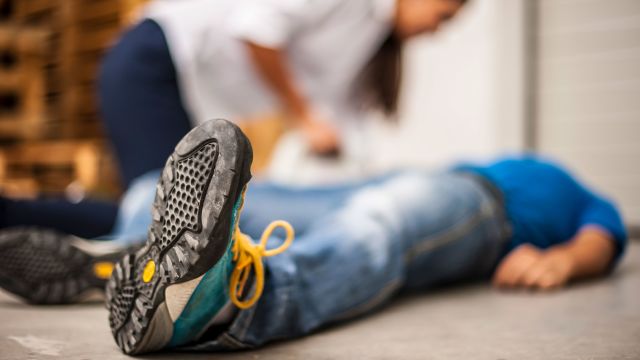Any injury or laceration that causes severe bleeding puts a victim’s life in imminent danger. Uncontrolled bleeding is the number one cause of preventable death in trauma patients, and trauma is the leading cause of death in the US for people under age 46. If you’re a bystander when someone is seriously injured, you can take immediate steps to stop the bleeding until emergency medical help arrives—and possibly save the victim’s life.
In October 2015, the White House launched a national awareness campaign called Stop the Bleed to teach people what to do when someone is bleeding. And, while incidents of intentional harm—such as the 2017 church shooting in Texas or the 2013 Boston Marathon bombing—get plenty of media attention, they are really just the tip of the iceberg when it comes to traumatic injuries.
“Stop the Bleed is rolling out education for the public, much like we did with AEDs [Automated External Defibrillators] for cardiac events, for stopping bleeding from either gunshot wounds or some kind of traumatic injury,” says Matt Tumbleson, Emergency Management Liaison at Grand Strand Medical Center in Myrtle Beach, South Carolina. Here, he shares how you can address trauma in the moment.
Safety first
“The biggest thing we teach people is that you want to make sure the scene is safe before you administer aid to someone,” Tumbleson says. “For an active shooter type situation, we teach run, hide, fight. Run away from the situation, and if you can’t run, then hide. As a last resort, fight to save your life and those around you.” Your safety is the top priority, he says.
How to stop bleeding
Once you’ve ensured you’re safe, call 911 for professional medical help. Then you can attend to the victim.
First, make sure the person is breathing, and then determine where the bleeding is coming from and what type of wound it is. You may have to cut or remove clothing to find the source. A superficial or venous wound typically oozes or runs with a small amount of dark colored blood, and applied pressure will generally stop the bleeding. A bleeding artery, however, causes the most blood loss. Arteries bring blood from the heart to the rest of the body. The blood is often bright red and comes out in spurts.
Use wound packing for life-threatening bleeding, especially those in the neck area or a joint. “Take any kind of material [for example, a shirt] that will stop bleeding and pack it [stuff it] into the wound.” Then, maintain continuous pressure on the packed wound until medical help arrives. It’s critical to apply as much pressure as possible. If you’re a small person, you may need to sit on the patient or leverage your body weight on the bleeding site. Time is also critical. The majority of people will die within three minutes from an arterial bleed, Tumbleson says, so every second counts.
When to use a tourniquet
If the life-threatening injury is to an arm or leg, and you are trained to do so, you may use a medical tourniquet. Tumbleson says a prepared, commercial tourniquet is ideal, and recommends Combat Application Tourniquet, which the US Army uses.
If a medical tourniquet is available, make sure you get it around the extremity, about two to three inches above the wound (but not on a joint), and between the wound and the torso. According to the Stop the Bleed website, you can add a second tourniquet closer to the torso if the first one does not completely stop the bleeding. If you don’t have a first aid or trauma kit with a medical tourniquet, apply as much pressure as you can on the wound until emergency medical help arrives.
The only difference in attending to a gunshot wound is that the victim might have both an entrance wound and an exit wound, says Tumbleson. In that case, you may have to control bleeding in two places instead of one. Gently roll the person front to back (like a log) to find both wounds.
Where to learn more
Tumbleson says there are plenty of online and offline training and resources for people to learn how to help those injured in a crisis situation. Try the American Red Cross for first aid instruction, the American Heart Association for CPR and, of course, Stop the Bleed for how to stop bleeding. There, you can find materials to help you get ready to take the two-hour course. “The class is very hands-on,” he says. “Anybody can do this.”






